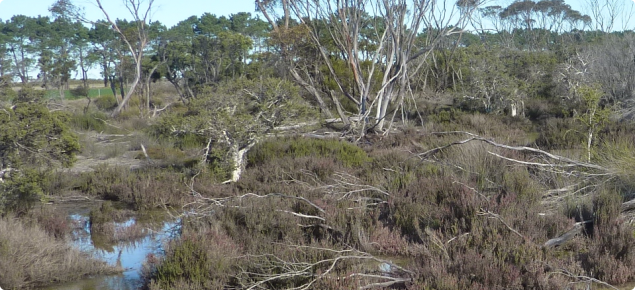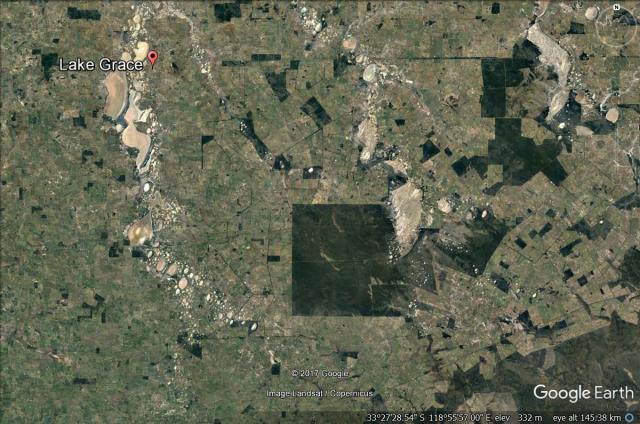The scale of the dryland salinity problem
More than 1 million hectares of previously productive land in South West Western Australia (SW WA) is severely affected by dryland salinity, and about 0.75 million hectares is moderately affected.. Dryland salinity is a major cause of land degradation and remains a threat to 2.8–4.5 million hectares of highly productive, low-lying or valley soils.. The lost agricultural productivity from salinity damage is estimated to be worth at least $519 million per year. Even though climate change has resulted in reduced annual rainfall, saline watertables have risen in many areas, meaning that dryland salinisation is a threat to about 2.8 to 4.5 million hectares of low-lying or valley floor soils.
Types of salinity
Primary salinity
Primary salinity develops naturally, mainly in areas where rainfall is insufficient to leach salts from the soil profile and evaporation is high. It occurs throughout the world in arid climates, including about 29 million hectares in Australia – 14 million hectares of salt marshes, salt lakes and salt flats, and 15 million hectares of naturally saline subsoils that have no groundwater or perched water to take the salts to the surface.
Moist and wet primary saline areas have very high natural diversity in WA, and are at risk from increased flooding, waterlogging and increasing salinisation. Natural salt lake chains in WA follow ancient drainage lines (Figure 1).
Secondary salinity
Secondary salinity develops as a result of changed land use and management. In Australia, clearing for agriculture has been the major driver of this change, because deep-rooted, perennial native vegetation has been replaced with shallow-rooted annual crops and pastures, and this change allows more groundwater recharge.
Native vegetation has evolved deep roots and tolerance to the highly variable climate in southern Australia, whereas most agricultural plants are short-season annuals that generally have shallow root systems and do not use all of the rainfall.
This unused rainwater either runs off or infiltrates beyond the root zone and accumulates as groundwater. The extra water entering the groundwater system (recharge) raises the watertable, mobilising salts stored in shallower unsaturated soil above. When the watertable nears the soil surface (less than 2 metres below the surface), groundwater can seep out (discharge) and evaporation concentrates salts at the surface.
Salinity is usually noticed when plants grow poorly and yields of farm crops and pastures are reduced by more than 25–30%. In severe cases, bare patches, known as salt scalds, develop with salt obvious on the surface. Where groundwater seepage is apparent, saline areas are referred to as saline seeps or seepage scalds.
More than 2 million hectares of broadacre farmland in Australia were estimated to be affected by dryland salinity in 2002, with more than half in WA (Australian Bureau of Statistics 2002).
Managing saltland case studies
See Managing dryland salinity case studies for ways that different managers in different areas have dealt with saline land.
For more information
Visit the dryland salinity landing page on this site, and the Dryland salinity chapter of the Report card on sustainable natural resource use in agriculture: status and trend in the agricultural areas of the south-west of Western Australia (PDF 2.7MB).
Reference
Australian Bureau of Statistics 2002, Salinity on Australian farms 2002, Bulletin 4615, Australian Bureau of Statistics, Canberra.



